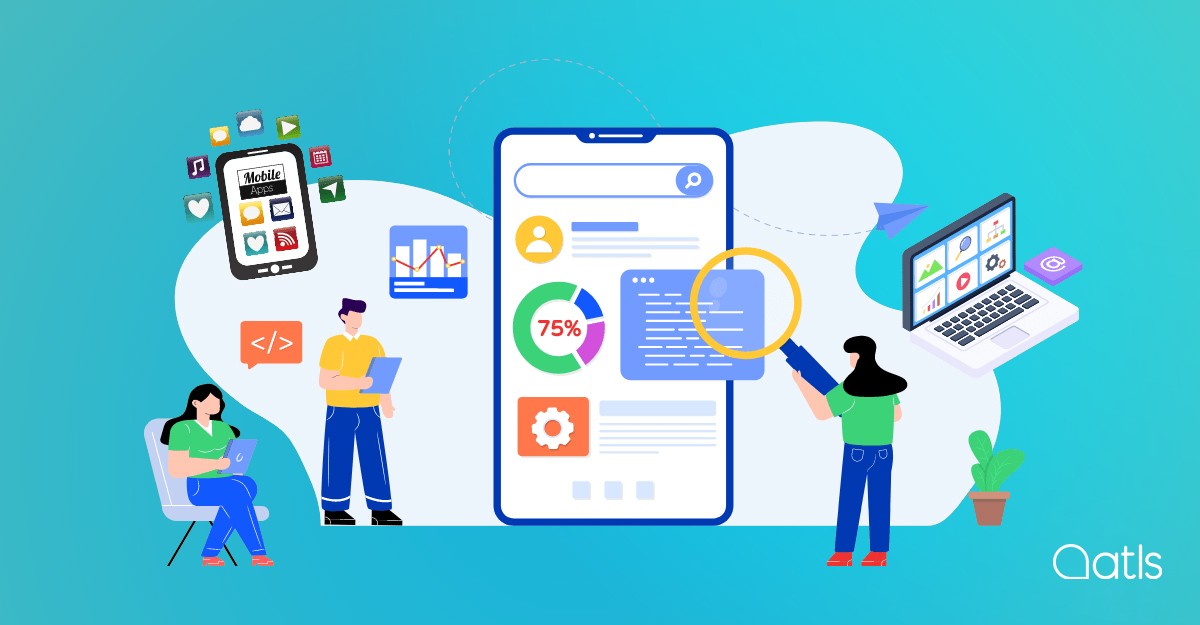What exactly is app localisation?

The localisation of applications includes a wide variety of elements, such as the adaptation of the design, date, time, currency, etc. And finally, we mustn't forget the translation and adaptation of the app's content according to the culture, language and country. Both web and mobile app localisation are becoming increasingly important, given that mobile device use has skyrocketed. For example, according to the Web Browsers survey, 91.5% of internet users accessed the internet via their smartphone in 2021. For most companies, websites and mobile apps are the most widely-used ways of interacting with consumers. This is why it's so important to understand the challenges involved in localising them. The aim is to improve the user experience and make a first impression that truly wows customers, in a bid to conquer new international markets.
What is app localisation?
The differences between translation and localisation
Localisation and translation are terms that are often confused. They may seem similar, but there are differences between translation and localisation: cultural, functional and technical aspects. Translation consists of translating the content of a text from one language to another, but localisation goes further and involves a cultural dimension - adapting a product or service to a particular market, prioritising the culture of each country.
Localisation involves adapting graphics, slogans, formats, colours, etc., so the overall presentation of the app will be analysed and restructured in full. For example, an app designed in France and aimed at a French-speaking audience might be problematic in China. The format, graphics and messaging need to be translated and adapted to different cultures in order to get winning results.
App localisation is a vital component of a business's internationalisation process. Adapting content to the target market can have a major impact on the number of downloads and subscriptions.
App localisation
App localisation is an essential process when launching a product to market, for a number of reasons. Firstly, the mobile application sector has experienced exponential growth. As indicated in the State of Mobile 2022 report, 230 billion apps were downloaded globally in 2021, the vast majority of which correspond to China (more than 98 billion), India (more than 20 billion) and the United States (more than 10 billion downloads). The report also states that users spent 170 billion dollars (just over 154 billion euros) on mobile apps in 2021.
The majority of apps we used up until 2010 were for listening to music, playing video games, accessing social media, etc. But apps have proliferated to such an extent that there are now apps for so many purposes that we use them in every area of our lives. They have become essential tools, and we no longer imagine our life without them. This has prompted the development of web and mobile apps that are marketed globally, and they all need to be adapted to the language and culture of the target country. In the past it was standard practice to offer applications solely in English—it being the universal language—but now this strategy could actually be seen as a competitive disadvantage.
Web app localisation
Web apps allow for a much higher content level than mobile apps. And the sheer volume of translated content tends to make web app localisation much more expensive. It also tends to be easier for consumers to work with a web app user interface than that of a mobile app, which means the main aim of web app localisation should be accurate translation. Given that web apps are hosted on web servers, they're not linked to the same operating systems as mobile apps, making the localisation process much less standardised.
Mobile app localisation
To be successful in the global market, a mobile application must speak the language of the target country. This means localising texts, messages, content, images, videos, currency, colours, layout, dates, times, numbers, product websites, help files, general description of the mobile application, screen shots for phones and tablets... and much more.
All in all, the app localisation process is more complicated than it might seem at first sight. It's up to developers to pay sufficient attention to this essential element when launching their products on international markets. That's why it's important to work with a translation company with a solid track record in app localisation.
App localisation - challenges
Whilst the challenges of website and mobile app localisation may not be the same, the end goal is: creating a rewarding user experience and making the product a leader in any target market. One easy way of jumping the localisation hurdles is to work with a translation company with a wealth of experience in app localisation.
At AT, we have a large team of professional native translators with extensive experience in translating and localising mobile and web apps. Shall we talk?




